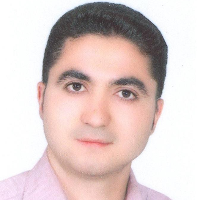Determining the Best Classification Algorithm in order to Estimate the Area under Date Palm Cultivation using LANDSAT 8 Satellite Imagery
Author(s):
Article Type:
Research/Original Article (دارای رتبه معتبر)
Abstract:
Introduction
Date palm is one of the most valuable horticultural products in Iran, which includes 16% of non-oil exports to the world. Kerman province has the second rank for the cultivation area of date palm in Iran. Having information about the exact cultivated area has gained importance for further decision makings. To determine the cultivated area, organizations usually use census which has the disadvantages of high cost, wasting time and labor intensive. The aim of this research was to study the feasibility of using Landsat 8 OLI images to identify and classify the area under date palm cultivation. To accomplish this purpose, four supervised classification methods were evaluated.
Materials and Methods
The study area was in Bam region located at 200 km southeast of Kerman province. In this research, a total of 14 images of Landsat8 OLI satellite from the study area during fall and winter were downloaded from Landsat official web page. After preliminary inspections for interested classes (Date palm gardens, Lands covered with bare soil and forage crop fields), one of the images that was taken on Jan 14, 2017, was selected for further analysis. After initial corrections and processing, 32 images of alfalfa farms, 32 images of date palm gardens and 32 images of lands covered with bare soil, were selected using GPS data points collected in study area scouting. Shape files of all selected fields were created and utilized for supervised classification training set. The same process was also done for the unsupervised classification method. To evaluate the classification methods confusion matrix and Kappa coefficient were used to determine the true and miss-classified area under date palm cultivation. It is worth mentioning that these factors alone cannot identify the most powerful method for classification and they just give us a general overview to choose acceptable methods among all available methods. To identify the most powerful method among selected methods, confusion matrix and investigating the pixel transfers between classes is the crucial method.
Results and Discussion
Results of classifications revealed that the overall classification accuracy by using NN, MLC, SVM, MDC, and K-Means were 99.10% (kappa 0.973), 98.77% (kappa 0.975), 98.66% (kappa 0.973), 98.52% (kappa 0.97), and 52.66% (kappa 0.31) respectively. Concerning the confusion matrix in the NN method, the percentage of producer accuracy error in date palm class was 0% and in user, accuracy error was 1.44%. In the review of other methods, the lowest producer accuracy error value in date palm class obtained by NN and SVM methods was 0% and the highest producer accuracy error belonged to MLC method which was 1.35%. Checking the recognition power of other classes showed that in the soil class, the highest producer accuracy error was 2.32% by MDC method and the least one was 0.64% by MLC. For forage class, the highest producer accuracy error was calculated 37.07% by SVM and the least accurate one was 4.92% by MDC. Although the K-Means method with Kappa Coefficient of 0.31 did not have a good classification quality, concerning classes and samples, it successfully could identify date palm according to selective samples with 100% accuracy. Results of calculated date palm area using supervised classification methods versus actual area measurements showed that NN and SVM methods with the coefficient of determination (R2) of 0.9995% and 0.9986% had the highest coefficients. K-Means method with R-square of 0.9228% had a good correlation.In general, all supervised classification methods obtained acceptable results for distinguishing between date palm classes and two other classes. NN and SVM methods could successfully recognize date palm class. K-Means method also could recognize date palm class but the recognition included some errors such as dark clay soil textures which were classified as the date palm.
Conclusions
In general, overall accuracy and kappa Coefficient alone cannot identify the most powerful method for classifying and these methods just give us a general overview to choose an acceptable percentage of accuracy coefficients among available methods. After the initial selection, to identify the most powerful method of classification the pixel transfer calculations in a confusion matrix would be an acceptable technique.Keywords:
Language:
Persian
Published:
Journal of Agricultural Machinery, Volume:9 Issue: 2, 2019
Pages:
321 to 335
magiran.com/p1977665
دانلود و مطالعه متن این مقاله با یکی از روشهای زیر امکان پذیر است:
اشتراک شخصی
با عضویت و پرداخت آنلاین حق اشتراک یکساله به مبلغ 1,390,000ريال میتوانید 70 عنوان مطلب دانلود کنید!
اشتراک سازمانی
به کتابخانه دانشگاه یا محل کار خود پیشنهاد کنید تا اشتراک سازمانی این پایگاه را برای دسترسی نامحدود همه کاربران به متن مطالب تهیه نمایند!
توجه!
- حق عضویت دریافتی صرف حمایت از نشریات عضو و نگهداری، تکمیل و توسعه مگیران میشود.
- پرداخت حق اشتراک و دانلود مقالات اجازه بازنشر آن در سایر رسانههای چاپی و دیجیتال را به کاربر نمیدهد.
دسترسی سراسری کاربران دانشگاه پیام نور!
اعضای هیئت علمی و دانشجویان دانشگاه پیام نور در سراسر کشور، در صورت ثبت نام با ایمیل دانشگاهی، تا پایان فروردین ماه 1403 به مقالات سایت دسترسی خواهند داشت!
In order to view content subscription is required
Personal subscription
Subscribe magiran.com for 70 € euros via PayPal and download 70 articles during a year.
Organization subscription
Please contact us to subscribe your university or library for unlimited access!



